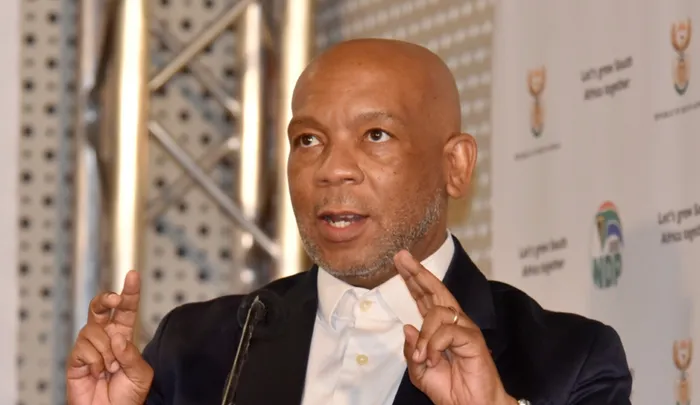Ramokgopa apologises to business for unplanned return of load shedding

Minister of Electricity Kgosientso Ramokgopa.
Image: Supplied
Minister of Electricity and Energy, Kgosientso Ramokgopa, took to the podium to apologise to business for the return load shedding.
On Tuesday, Eskom announced that Stage 2 load shedding will only be implemented during peak periods, from 4pm to 10pm, until Thursday (May 15).
Ramokgopa told media that the level of outages was due to delayed return of generation units and unplanned breakdowns in the past day or so.
The return of load shedding is now at 2023 levels, said Ramokgopa, noting that “we have reached that red line” at which Eskom needs to implement blackouts. Stage 2 outages involve disconnecting areas from the grid for as long as four hours at a time.
Data compiled by the Council for Scientific and Industrial Research showed that load shedding cost the South African economy about R2.8 trillion in 2023, with more intense rolling blackouts than any other year.
Taking responsibility for the unplanned power cuts, Ramokgopa said Eskom and the Department have not delivered on its promise to keep load shedding at bay.
“This represents a failure on our part to ensure there’s proper management of original equipment manufacturers…. This is a planning issue, this is a management issue.”
The Minister added that there would be “consequence management” and the Department and Eskom were engaging with power station general managers. “This is “something that is receiving attention”.
Saying he aimed not to have to make a similar apology again, Ramokgopa said load shedding was “catastrophic”. He added that it caused a “major disruption on business and quality of life”.
Eskom’s CEO, Dan Marokane, said the utility aimed to bring power back as soon as possible, noting that the state-owned enterprise would review the situation on a day-to-basis.
Ramokgopa added that South Africa was entering peak winter on a much better footing than last year and all Koeberg units would be online by July. “We won’t eliminate outages but we need to bring them down so we can meet our promises,” he said.
Fundamental issues regarding capacity were resolved as Eskom aggressively tackled maintenance issues and now needed to ensure that maintenance was aligned with demand, he said.
Recent Statistics South Africa data showed that electricity generation increased by 1.1% year-on-year in March 2025.
IOL
Get your news on the go, click here to join the IOL News WhatsApp channel.
Related Topics: